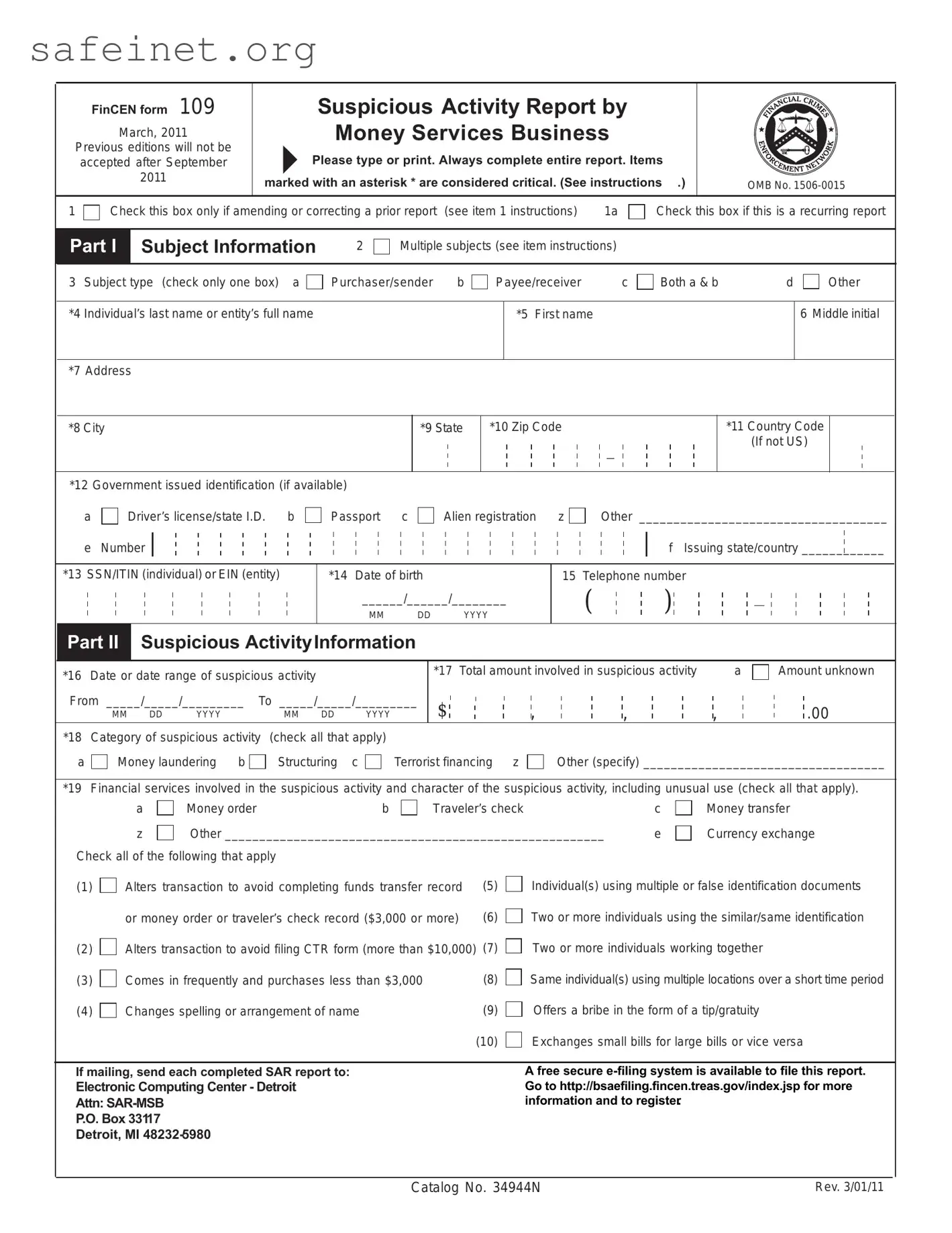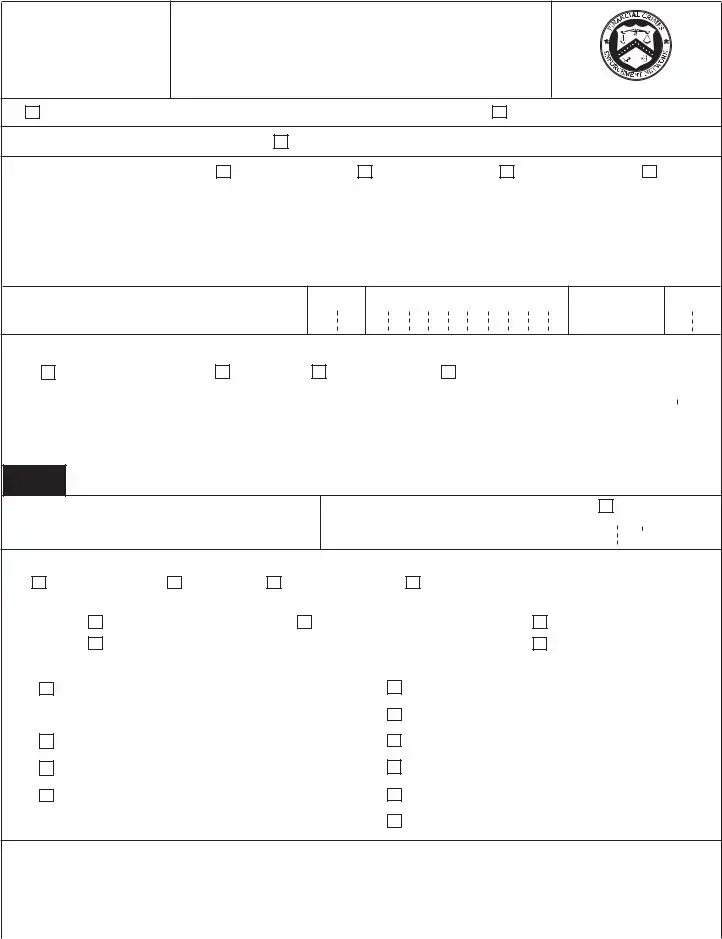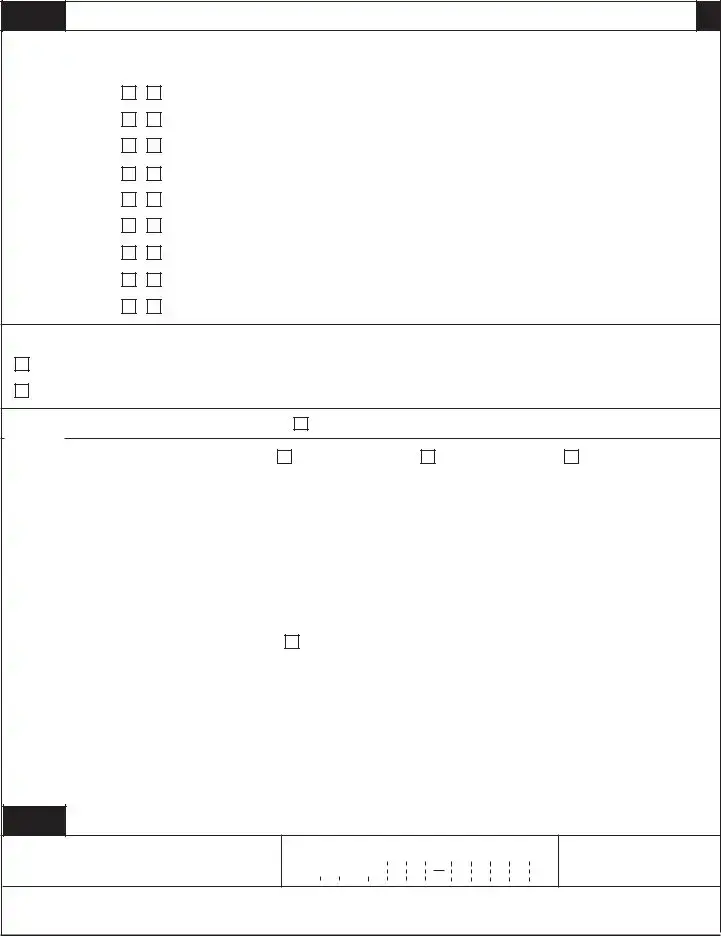|
|
|
|
2 |
|
7. Type or complete the report using block |
even if the entire address is not known. If the |
document used. In box “e” list the number of the |
|
written letters. |
street address, city, or ZIP Code is unknown, |
identifying document. In box “f” list the issuing |
|
enter “NA” in the item. If a state or country is |
state or country. If more space is required, enter |
8. If more than one subject is being reported, |
unknown, enter “XX” in the item. |
the additional information in Part VI. If the subject |
use as many copies of the Part I Subject |
|
is an entity or an individual’s identification was |
Information page as necessary to record the |
D. Item Preparation Instructions |
not available, check box “z” and enter “XX” in |
additional subjects. Attach the additional page(s) |
|
“Other.” |
|
|
|
behind page 1. If more than one transaction |
Item 1. Check the box if this report amends |
Item 13 |
*SSN/ITIN (individual) or EIN |
location is being reported, use as many copies of |
(adds missing data) or corrects errors in the prior |
the Part III Transaction Location Information page |
report. (See Part V, item “s”). |
(entity). |
See General Instruction 12 and |
as necessary to record the additional locations. |
|
definitions. If the subject named in Items 4 |
Attach the additional page(s) behind page 2. If |
Item 1a-- Check this box if this is a recurring |
through 6 is a U.S. Citizen or an alien with a SSN, |
more space is needed for the Part VI Narrative, |
report filed on continuing activity. |
enter his or her SSN in Item 13. If that person is |
add as many blank continuation pages as |
|
an alien who has an ITIN, enter that number. For |
necessary to complete the narrative. Attach the |
Part I Subject Information |
an entity, enter the EIN. If the SSN, ITIN, or EIN |
additional pages behind page 3. |
|
was unknown or not applicable, enter “XX” in this |
If more space is needed to complete any other |
Item 2 Multiple subjects. Check this box if |
item. |
|
|
|
multiple subjects are involved. Attach Part I |
Item 14 |
*Date of birth. See General |
item, identify that item in Part VI by “item |
Subject continuation pages behind page 1 to |
number” and provide the additional information. |
account for all additional subjects involved in the |
Instruction 9. If the subject is an individual, enter |
|
suspicious activity. |
the date of birth. If the month and/or day is not |
9. Enter all dates in MM/DD/YYYY format |
|
available or unknown, fill in with zeros (e.g., “01/ |
where MM = month, DD = day, and YYYY = |
Item 3 Subject type. Check box “a” if the |
00/1969” indicates an unknown date in January, |
year. Precede any single number with a zero, |
subject purchased a money order(s) or traveler’s |
1969). |
|
|
|
i.e., 01, 02, etc. |
check(s) or sent a money transfer(s). Check box |
Item 15 Telephone number. See General |
|
“b” if the subject cashed a money order(s) or |
10. Enter all telephone numberswith (area |
traveler’s check(s) or received payment of a money |
Instruction 10. Enter the U.S. home or business |
code) first and then the seven numbers, using |
transfer(s). Check box “c” if both “a” and “b” |
number for individual or entity. List foreign |
the format (XXX) XXX-XXXX. List fax and |
apply. If the transaction is a currency exchange |
telephone numbers and any additional U.S. |
international telephone numbers in Part VI. |
check box “c.” Check box “d” Other and describe |
numbers (e.g., hotel, etc.) in Part VI. |
|
in Part VI if the subject is an individual other than |
Part II Suspicious Activity Information |
11. Always enter an individual’s name by |
a customer. Examples are MSB employees and |
entering the last name, first name, and middle |
agents. |
Item 16 *Date or date rangeof suspicious |
initial (if known). If a legal entity is listed, enter |
|
its legal name in the last name item and trade |
Items 4, 5, and 6 *Name of subject. See |
activity. See General Instruction 9. Enter the |
name in the first name item. |
General Instruction 11. Enter the name of the |
date of the reported suspicious activity in the |
|
subject individual in Items 4 through 6. If the |
“From” field. If more than one day is involved, |
12. Enter all identifying numbers (alien |
MSB knows that the individual has an “also known |
indicate the duration of the activity by entering |
registration, driver’s license/state ID, EIN, ITIN, |
as” (AKA) or “doing business as” (DBA) name, enter |
the first date in the “From” field and the last date |
Foreign National ID, passport, SSN, vehicle |
that name in Part VI. If the subject is an entity, |
in the “To” field. |
license number, etc.) starting from left to right. |
enter the legal name in Item 4 and the trade or |
|
|
|
|
Do not include spaces or other punctuation. |
DBA name in item 5. If the legal name is not |
Item 17 *Total dollar amount. See General |
|
known, enter the DBA name in Item 4. If there is |
Instruction 14. If unknown, check box 17a.If the |
13. Enter all ZIP Codeswith at least the first |
more than one subject, use as many Part I Subject |
suspicious activity only involved purchases, or |
five numbers (ZIP+4, if known). |
Information continuation pages as necessary to |
redemptions, or currency exchanges, enter the |
|
provide the information about each subject. |
total U.S. Dollar value involved in the reported |
14. Enter all monetary amounts in U.S. |
Attach the additional copies behind page 1. When |
activity. For instance, if multiple money orders |
Dollars. Use whole dollar amounts rounded up |
there is more than one purchaser and/or payee |
from more than one issuer were redeemed, enter |
when necessary. Use this format: $000,000,000. |
(e.g., two or more transactions), indicate in Part VI |
the total of all money orders redeemed. If |
If foreign currency is involved, record the |
whether each subject is a purchaser or payee and |
multiple activities are involved, such as a |
currency amount in U.S. Dollars, name, and |
identify the instrument or money transfer |
redemption of money orders combined with |
country of origin in the Part VI narrative. |
information associated with each subject. If part |
purchase of a money transfer, enter the largest |
|
of an individual’s name is unknown, enter “XX” in |
activity amount in Item 17. For instance, if the |
15. Addresses, general. Enter the permanent |
the appropriate name item. If the subject is an |
transaction involved redeeming $5,000 in money |
street address, city, two letter state/territory |
entity, enter “XX” in Item 5 (if the trade or legal |
orders and purchase of a $3,500 money transfer , |
abbreviation used by the U.S. Postal Service, and |
name is not known) and in Item 6. |
the Item 17 amount would be $5,000. |
ZIP code (ZIP+4, if known) of the individual or |
Items 7 - 11 *Permanent address. See |
Item 18 |
*Category of suspicious activity. |
entity. A post office box number should not be |
used for an individual, unless no other address is |
General Instructions 13 and 15. Enter “XX” if the |
Check the box(es) which best identifies the |
available. For an individual also enter any |
street address, city, and ZIP Code items are |
suspicious activity. Check box “b Structuring” |
apartment number or suite number and road or |
unknown or not applicable. Enter “XX” if the |
when it appears that a person (acting alone, in |
route number. If a P.O. Box is used for an entity, |
state or country is not known. |
conjunction with, or on behalf of other persons) |
enter the street name, suite number, and road or |
Item 12 *Government issued identification (if |
conducts or attempts to conduct activity designed |
route number. If the address is in a foreign |
to evade any record keeping or reporting |
country, enter the city, province or state if Canada |
available). See General Instruction 12. Check |
requirement of the Bank Secrecy Act. If box “d” |
or Mexico, and the name of the country. |
the box showing the type of document used to |
is checked, specify the type of suspicious activity |
Complete any part of the address that is known, |
verify subject identity. If you check box |
which occurred. Describe the character of such |
|
“z Other”, be sure to specify the type of |
activity in Part VI. Box “z” should only be used if |


 Please type or print. Always complete entire report. Items marked with an asterisk * are considered critical. (See instructions .)
Please type or print. Always complete entire report. Items marked with an asterisk * are considered critical. (See instructions .) .00
.00

 )
)

